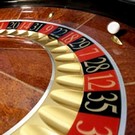 The Labouchere Roulette system has been around for many years and was even popularly referred to as “Labby” in Europe more than a century ago. The system was a favorite because it was designed to provide a small win on a very regular basis. Of course, like other systems, it was not infallible, as the original practitioner, Henry Labouchere, found.
The Labouchere Roulette system has been around for many years and was even popularly referred to as “Labby” in Europe more than a century ago. The system was a favorite because it was designed to provide a small win on a very regular basis. Of course, like other systems, it was not infallible, as the original practitioner, Henry Labouchere, found.
The Labouchere system is designed with a line of 10 or 12 numbers that the player crosses off as they win wagers. The numbers represent the actual wagers and often start with a simple line, such as 1, 2, 3, 4, 5, 6, 7, 8, 9, and 10. The numbers also represent the amount the player wishes to win.
With this simple line of numbers, the player hopes to win 55 units. A shorter line of 1, 2, 3, and 4 would yield 10 units. The implied strength of the system is that a player only needs to win one-third of their wagers to complete the line, since the first and last numbers are the size of each wager and are both crossed off the line when there is a winning bet.
In Reverse
When the Labouchere is played in reverse the player does not choose an amount to win, but rather an amount to risk. This system produces many good rules for the player. It limits their loss on any one session and causes them to set and maintain some type of a bankroll. It also allows them to make a substantial amount of money on the occasions when they do have a long streak of more winners than losers.
The off-set of the Reverse Labouchere is that the player takes the opposite side of the wagers. With the traditional system, the player need only win slightly over 33% of their wagers. With the reverse, the player need only lose slightly over 33% of their wagers to have their table stake wiped out.
How to Play the Reverse Labouchere
By following the line of wagers of a Reverse Labouchere, the player turns the original system into a winning progression, wagering more and more until a comfort level or the house/table maximum is reached. Again, a number of wagers are listed, this time totalling the amount of the player’s stake for a round of play.
Example of Stakes
Suppose the player wishes to risk €55 on a single “Labby”. The longer the line of numbers, the longer you can last. However, there is a line between lasting longer and never being able to get to the larger wagers. Again, a line of 8 to 12 numbers is best. Suppose we use this set of 10 numbers again:
1, 2, 3, 4, 5, 6, 7, 8, 9, 10
The first wager would be the sum of the first and last number on your list: 1 + 10 = 11. If you lose, cross both numbers off the list, which is now just 8 numbers. If you win, extend the list to include the winning number, so your line is now 11 total wagers (your bankroll is also now €66). The next wager is the sum of the first and last numbers: 1 + 11 = 12. Again, if you lose, cross out the numbers on either end of the list and adjust your next wager back to 11.
If you win, you now have a 12 number list of 1 through 12, and your next wager is 13. Follow this pattern as long as you wish.
Ideally, you will have a nice run of wins (you don’t need a consecutive win streak) and your wagers will grow steadily.
The Split Labouchere
 For those who wish to reduce the risk of losing their entire stake quickly, some players of both the Labouchere and the Reverse Labouchere have taken to splitting their 12-number string of bets into three columns. With this plan, a Labouchere starting with 1,2,3,4,5,6,7,8,9,10 (55 units) is converted to 56 units across three groups: 1, 2,2,3,4,5 – 1, 2, 2, 3, 4, 5 – 1,2,2,3,4,5,6.
For those who wish to reduce the risk of losing their entire stake quickly, some players of both the Labouchere and the Reverse Labouchere have taken to splitting their 12-number string of bets into three columns. With this plan, a Labouchere starting with 1,2,3,4,5,6,7,8,9,10 (55 units) is converted to 56 units across three groups: 1, 2,2,3,4,5 – 1, 2, 2, 3, 4, 5 – 1,2,2,3,4,5,6.
The way to play this is to make one wager from the first group, which would be 6 units, and then, win or lose (adding or crossing out numbers), the next wager is from the second group (again, adding or crossing out numbers), and the next wager is from the third group, then back to the first etc.
This system reduces the risk of going broke quickly and should be done with the Labouchere during a particularly bad session when the wagers get large.
With the Reverse Labouchere, this system would be used at the very beginning of a session to reduce the chance that the starting bankroll will be wiped out immediately with several losing wagers. While this will keep the player in action longer, it will not increase the chances that the player will get to table-limit size bets.
Since the Reverse Labouchere’s main attraction is the potential to make a large score, once the player is winning an amount over half of their starting stake, the three columns should be reduced to two, and then to one (the reverse, right?).
Suppose your starting bankroll was €56 and has been increased to €84. Take the three columns of approximately 21 numbers and reduce them to 16 by totalling the units in one whole column (€28) and adding one large wager to the end of the two remaining columns.
If the two columns remaining were both 2, 2, 3, 4, 5, 6, 7 – then add an 8 to the high end of each. This will add €16 to the two strings and you should wager whatever remains (perhaps €10 in this example) on the next spin. If it wins, add a 1 and a 9 to each column and continue playing. If the wager loses, move on to your next wager for the first column, then on the next spin return to the second column and so forth.
Use a similar tactic to combine the remaining two columns if you wish after you double your current stake. This means that if you started with 55 units and three columns and switched to two columns at 84 units, wait until you reach at least 160 units before converting to a single column. Make sure you reduce the total bets by about 30%, so if you had two columns of 12 numbers reduce to a single column of about 16 numbers.
Players of the Reverse Labouchere have the luxury of quitting anytime they wish, with only their comfort level dictating their decisions. If you were happy with two columns, stay with it. If you want a single column, use that, and quit when you have a substantial win that makes you happy.




